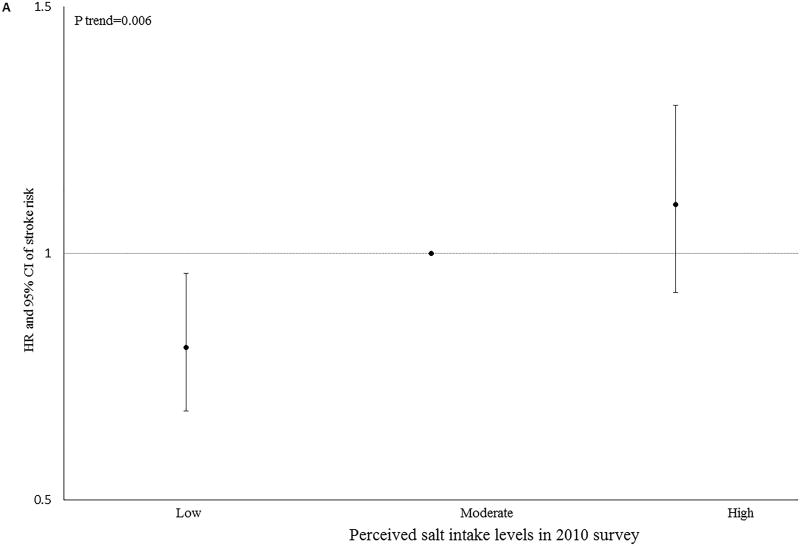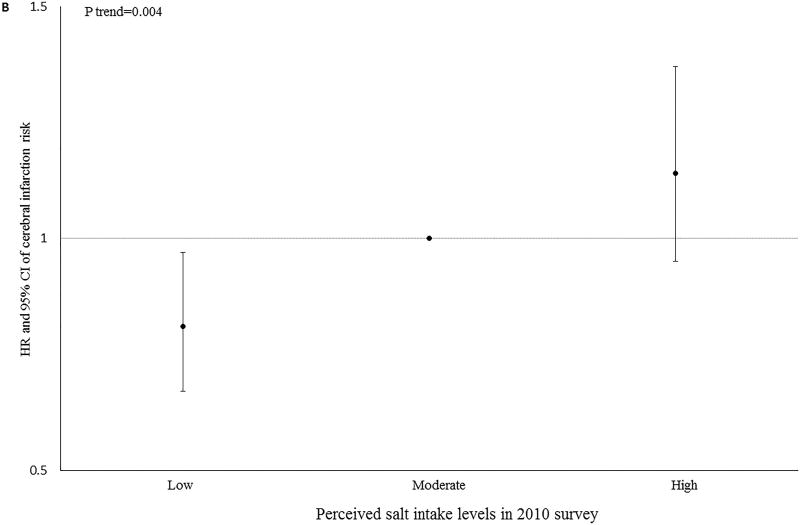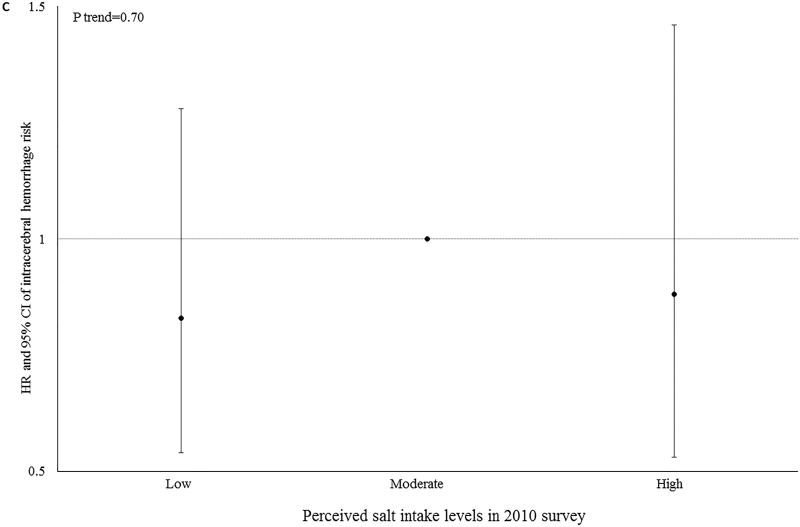FIGURE 1.
Adjusted Hazard Ratios and 95% confidence intervals for risk of stroke (A), cerebral infarction (B) or intracerebral hemorrhage (C) according to perceived salt intake in 2010, adjusted for age, sex, smoking (current, past, or never), alcohol intake (never, past, light, moderate, or heavy), education (illiteracy or elementary school, middle school, or college/university), physical activity (never, sometimes, or active), average monthly income of each family member (<¥500, ¥500 to ¥3000, or≥¥3000), systolic blood pressure (≤120, 121–139, ≥140 mmHg), diastolic blood pressure (≤80, 81–89, ≥90 mmHg), estimated glomerular filtration rate(≤30, 31–59, 60–89, ≥90 mL/min/1.73m2), average concentration of triglycerides, high-density lipoprotein cholesterol, low-density lipoprotein cholesterol, high sensitivity C-reactive protein, fasting blood glucose and body mass index, use of antihypertensive, hypoglycemic, and lipid-lowering medications (yes/no for each).



